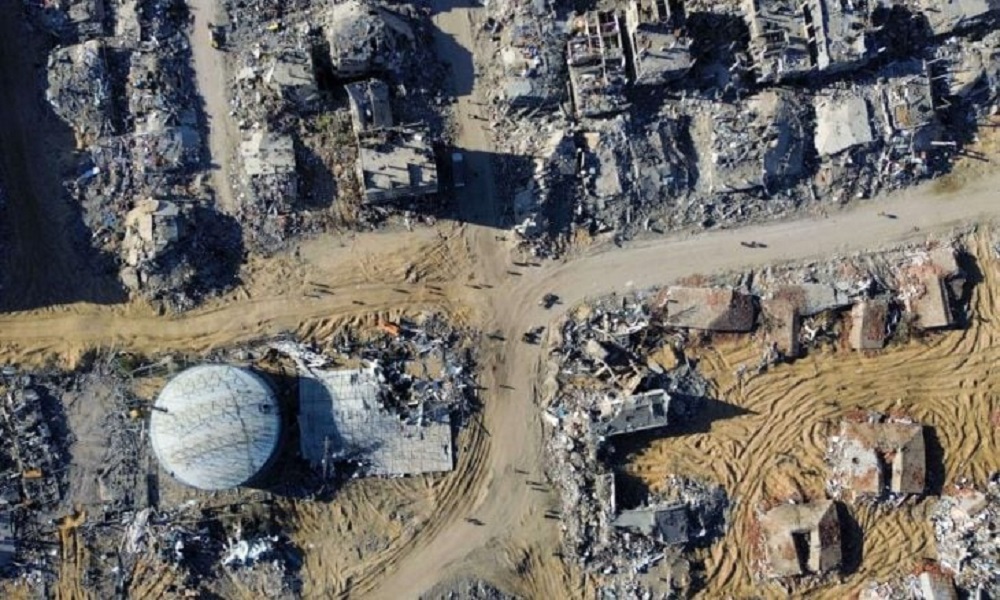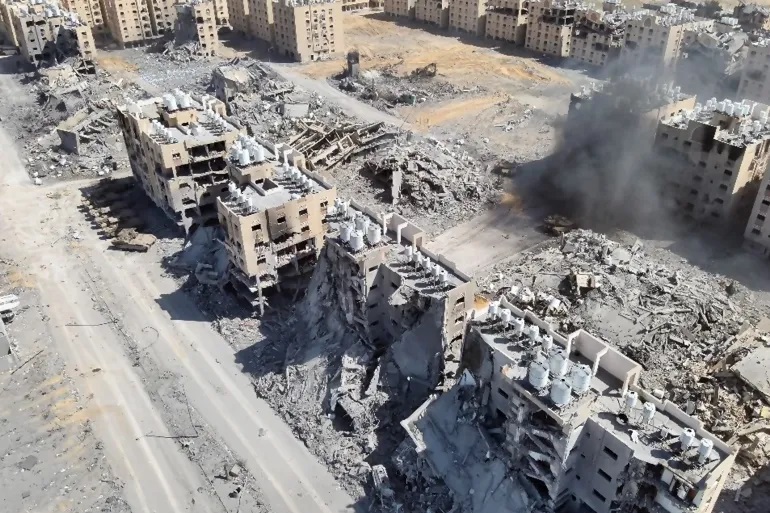Rafah in Ruins: Israel’s War Leaves Southern Gaza Devastated
Since October 7, Israeli military operations have destroyed 90% of Rafah’s residential areas, crippled its infrastructure, and turned the city into an uninhabitable zone,

Watan-The Government Media Office in the Gaza Strip stated on Sunday that the Israeli army has destroyed an area of 12,000 square meters in Rafah, in the southern part of the Strip, leading to the obliteration of 90% of the residential neighborhoods in the city since the start of the war on October 7, 2023.
This came in a statement posted by the office on Telegram, in which it added that Israel has destroyed 85% of the sewage networks in Rafah, “turning it into an environment conducive to the outbreak of epidemics and diseases.”
Due to the Israeli war of extermination, all 12 medical centers in Rafah have been completely put out of service, most notably the Martyr Abu Youssef Al-Najjar Hospital—which was blown up by the occupation using an explosive robot—as well as the maternity hospital and the Indonesian hospital, according to the statement.

Systematic Erasure: Rafah’s Infrastructure and Lifelines Obliterated
Israel also completely destroyed 8 schools and educational institutions, and caused severe damage to the remaining ones. In addition, more than 100 mosques were either completely or heavily destroyed.
According to the statement, the Israeli army bulldozed tens of thousands of agricultural dunums in Rafah and destroyed 30 out of 36 government facilities in the governorate, including the main building of Rafah Municipality.
In the governorate, which spans 60 square kilometers, houses around 300,000 residents, and represents approximately 16% of the Gaza Strip’s total area, the Israeli army bombed hospitals, bulldozed roads, demolished buildings, and obliterated mosques, markets, and public squares, the statement added.
Israel also destroyed 22 out of 24 water wells, including the main “Canada Well” and its distribution pumps, depriving tens of thousands of families of drinking water.
The governorate also witnessed the destruction of over 85% of its sewage network, intentionally sabotaged, turning the city into “a contaminated environment prone to the spread of epidemics and diseases,” in addition to the full destruction and bulldozing of 320 kilometers of roads, according to the statement.






